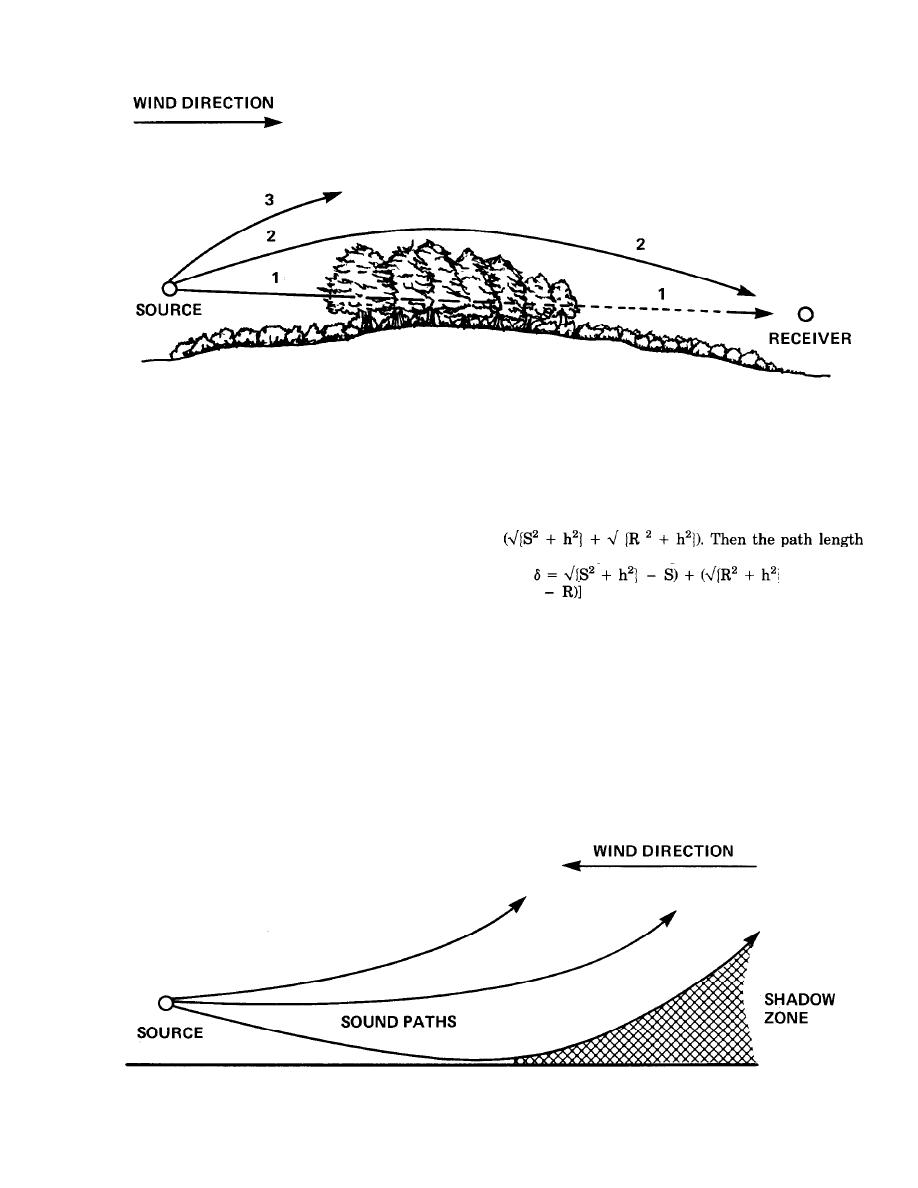
TM 5-805-4/AFJMAN 32-1090
Figure 5-2. Downwind Sound Diffraction.
of a mixture of deciduous and coniferous trees
path produce large values of the diffraction angle
having a height in the range of 20 to 40 feet. For
and large values of path length difference, which
this density, the visibility penetration is about 70
in turn provide strong shadow zones and large
to 100 feet.
values of insertion loss. In figure 5-6, the direct
line-of-sight path length is S+R, and the actual
5-5. Barriers.
distance traveled is
A barrier is a solid structure that intercepts the
direct sound path from a source to a receiver. It
difference is given in equation 5-5.
provides a reduction in sound pressure level
within its "shadow zone." A wall, a building, a
(eq 5-5)
large mound of earth, an earth berm, a hill, or
b. Insertion loss values. Table 5-6 gives the
some other form of solid structure can serve as a
insertion loss of an outdoor barrier wall as a
barrier. The approximate insertion loss of an
function of the path length difference and the
outdoor barrier can be estimated.
octave band frequency. The following restrictions
a. Barrier parameters. Figure 5-6 illustrates the
apply.
geometrical aspects of an outdoor barrier where no
(1) Other reflecting surfaces. There should be
extraneous surfaces reflect sound into the pro-
no other surfaces that can reflect sound around the
tected area. The insertion loss provided by the
ends or over the top of the barrier into the
barrier to the receiver position is a function of the
protected region (the shadow zone). Figure 5-7
path length difference between the actual path
shows examples of reflecting surfaces that can
traveled and the line-of-sight direct path. Large
reduce the effectiveness of a barrier wall. These
values of barrier height "h" above the line-of-sight
situations should be avoided.
Figure 5-3. Upwind Sound Diffraction.
5-6


 Previous Page
Previous Page
